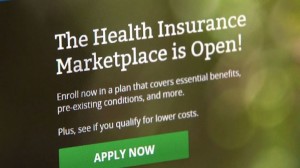>> Kate Douglas Torrey shares a North Carolina success story about a community coming together to help women and families access affordable healthcare. Local partnership efforts also include a one-day enrollment blitz on March 24th in order to help consumers meet the enrollment deadline of March 31st. Learn how your community can pull together a similar effort.
Kate Douglas Torrey shares a North Carolina success story about a community coming together to help women and families access affordable healthcare. Local partnership efforts also include a one-day enrollment blitz on March 24th in order to help consumers meet the enrollment deadline of March 31st. Learn how your community can pull together a similar effort.
Amid last week’s snowstorm, the new Affordable Care Act’s enrollment figures went largely unnoticed, which is too bad because the state has a lot to crow about. Through January 31, North Carolina has enrolled over 160,000 people, a whopping 135% of the state’s four-month enrollment target. In fact, among all federally facilitated marketplaces we are third, behind only Texas and Florida—and fifth overall—in the number of individuals who chose an insurance plan. It’s worth analyzing how we hit those robust numbers and how we can leverage that momentum over the final 6 weeks of open enrollment.
In Chapel Hill, a thriving all-volunteer partnership to help consumers enroll is under way. The component pieces– where, who, when, and how —have been developed and refined over the past several months and can be applied in other communities across the state. Here’s our blueprint for fitting the pieces together.
Where : it was easy to identify the trusted, go-to place where the public seeks out information—the public library! And, like many around the state, the Chapel Hill Public Library provides secure public-access computers, perfect for the ACA’s online enrollment process. CHPL was eager to support this project and to devote resources (of time and space) to its success. Securing the venue was the first step. (A similar partnership is also in place at the Orange County Library in Hillsborough.)
Who : We started with a small group of half a dozen Certified Application Counselors (CACs), trained under the auspices of UNC Healthcare and Planned Parenthood of Central North Carolina. We are all volunteers: some of us are over 65 and others are under 25; we are female and male; employed, self-employed, and retired; white, black, and brown; some of us lacked health insurance prior to the ACA and others have always had it; our backgrounds vary widely—including medicine, health care, insurance, landscape gardening, community organizing, book publishing, teaching, IT, engineering; some are future nurses and doctors and social workers; several are Spanish-speakers. The group had originally come together as members of the League of Women Voters Volunteer ACA Speakers’ Bureau. We quickly added more CACs from PPCNC, from the Student Health Action Coalition at UNC-Chapel Hill and, just before the holidays, expanded further to include CACs from the Orange County Health Department and UNC Family Medicine. What brought us together was that we all wanted the chance to reach a broad slice of the public.
When : In consultation with CHPL, we set up a schedule of 3-hour sessions (one evening, one afternoon, and one midday session each week); CHPL offered to do some publicity and to announce CAC availability on their website, advising consumers to call for exact days/times. This gave the Library a chance to gauge interest and to remind consumers of the information to bring with them; we designated one session weekly for Spanish-language assistance. In December, as the first enrollment deadline approached, we added one weekend afternoon to the schedule. The CACs now share an electronic calendar that allows everyone to see the 4 day/wk schedule and to sign up for convenient shifts directly, with a minimum of time spent coordinating. In March, we plan at least one all-day “enrollment blitz.”
How: In addition to a great venue, a good-sized pool of dedicated volunteers, and an agreed-upon schedule, there are several other things that have made this collaboration a success. First, CHPL designated its computer lab for the CAC work. This allows privacy for consumers and, equally important, it means CACs can share solutions and trade tips with each other while helping consumers (sometimes individually, sometimes with several simultaneously).
Second, to help balance the traffic flow, CHPL schedules up to four appointments per session and reminds callers that walk-ins are welcome; at the end of each session, CACs report the total headcount of consumers assisted, allowing CHPL to compile data.
Third, CHPL has given us a drawer outside the computer lab to store our growing file of handouts and information sheets. In turn, this encourages CACs to seek out and share resources with each other and with consumers (lists of key phone numbers, area health centers, an overview of how health insurance works, etc.).
And finally, CHPL generously waives its usual printing fees if consumers wish to print out eligibility forms or details of several health plans for comparison.
Towards the goal of insuring that affordable health care is a right, not a privilege, all of us involved with this project would be delighted if others used our blueprint. And if you refine it further, let us know–we want to learn from you.
Kate Douglas Torrey is a Certified Application Counselor. You can contact her with questions at >>kate.d.torrey@gmail.com.
There are no comments
Add yours